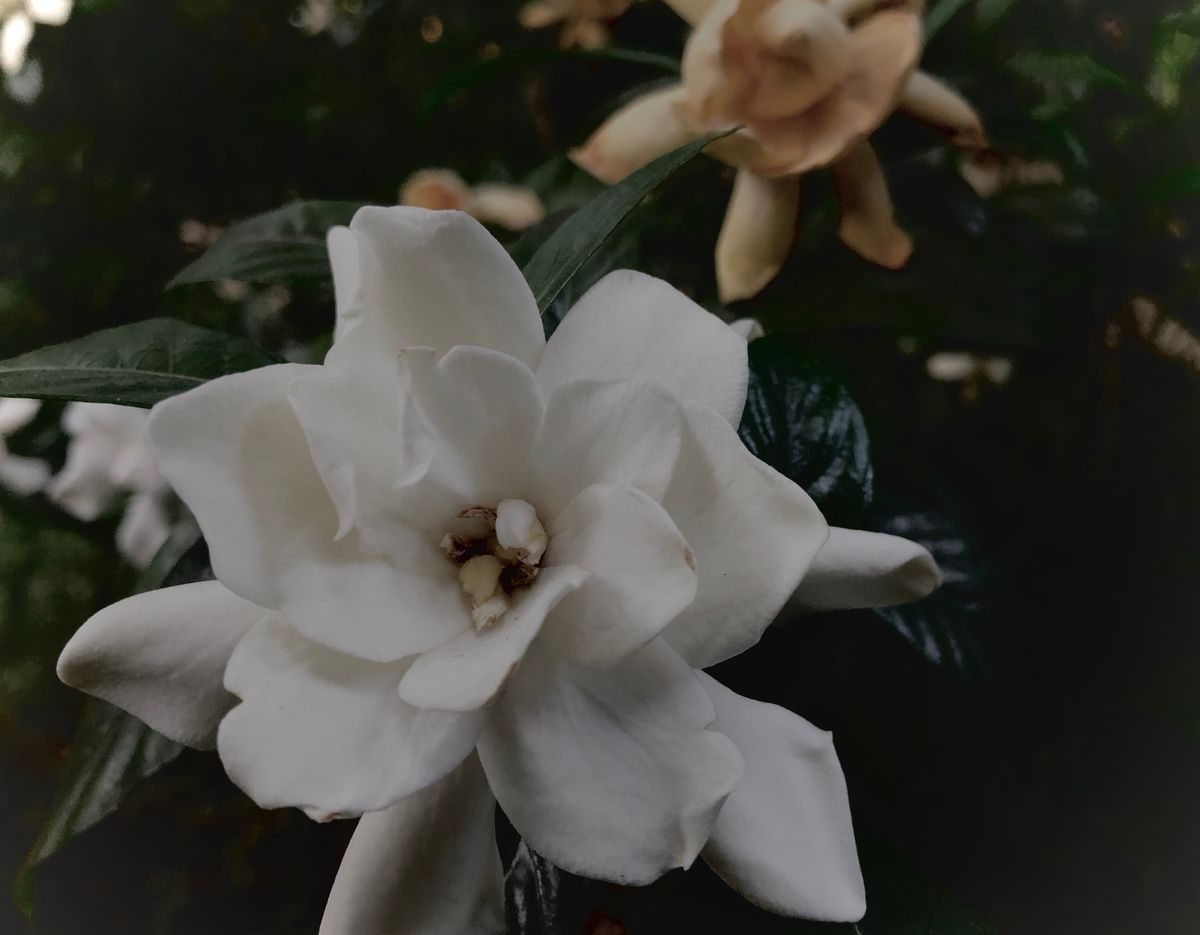The Lesson of the Gardenias
The things in our garden that seem so small—a pair of flowers on a bush in mid-May—echo the patterns of the great and cosmic.

The world turns all around us, moving in its cycle, space-time flowing past us like water in a stream. We’re in the stream of course, flowing right along with it, but we have the opportunity, if we take it, to anchor ourselves to the riverbed and watch the water flow past, to pay attention to it and really see it as it coils and curls, ripples and roils all around us.
What are you paying attention to right now? What do you see?
Right now, I see gardenias. I’ve been noticing them, but I don’t see them the way that my wife does. Last night, at dusk, she was out in our yard, taking pictures of the gardenias. She had just told me a few days earlier that the gardenias bother her. They produce these beautiful white blooms, but then, in a week’s time, those blooms brown and wither and are gone.
“Look at this,” she said. She reached down and grabbed a branch and pulled it forward. On the front of the branch was a brilliant white flower. Just behind it, though, almost touching, was another one: brown, decaying, withering off the vine.
“Tonight,” she said, “They amaze me.”
This is the way the universe works. Everything decays and dies. Its atoms and molecules get mixed up with the other atoms and molecules of the things around it, and they experience a kind of rebirth in a new form. When one gardenia fades, another comes to prominence, and that one too will be replaced by another and then another, until the end of the season.
The unruly buddha knows that everything is impermanent, everything is changing.
The things in our garden that seem so small—a pair of flowers on a bush in mid-May—echo the patterns of the great and cosmic. A star dies, jettisons its remaining hydrogen fuel which coalesces with the remnants from some other ancient explosion. Suddenly, over the course of millions of years, a new star is born.
In the midst of death and decay, there is always new life, but you must have the eyes to see it. You must pay attention to the withering gardenia and not just the shiny new thing that has come to take its place.
This is the miracle of being human, being the part of the universe that observes itself. Unlike most things, we can hunker down in the stream and notice time flowing right past us. We can even make it stand still if we really take the time to notice. Though we are so small and so temporary, we can find eternity in this moment and in that one and even in the one after that too, if only we pay attention to the gardenias in the waxing light of the overripe moon.